12 Myths About Cleaning Debunked
No one wants to spend more energy and time cleaning their houses than is strictly necessary. And maybe you’ve thought about using an “innovative” solution that promises wonderful results, but when you put it into practice, it doesn’t work. While some tricks do work, others will only create more complications and, in the end, more work.
5-Minute Crafts wants to show you 12 home cleaning tips that, for the most part, don’t work as promised to keep that from happening.
1. Using baking soda and vinegar for everything
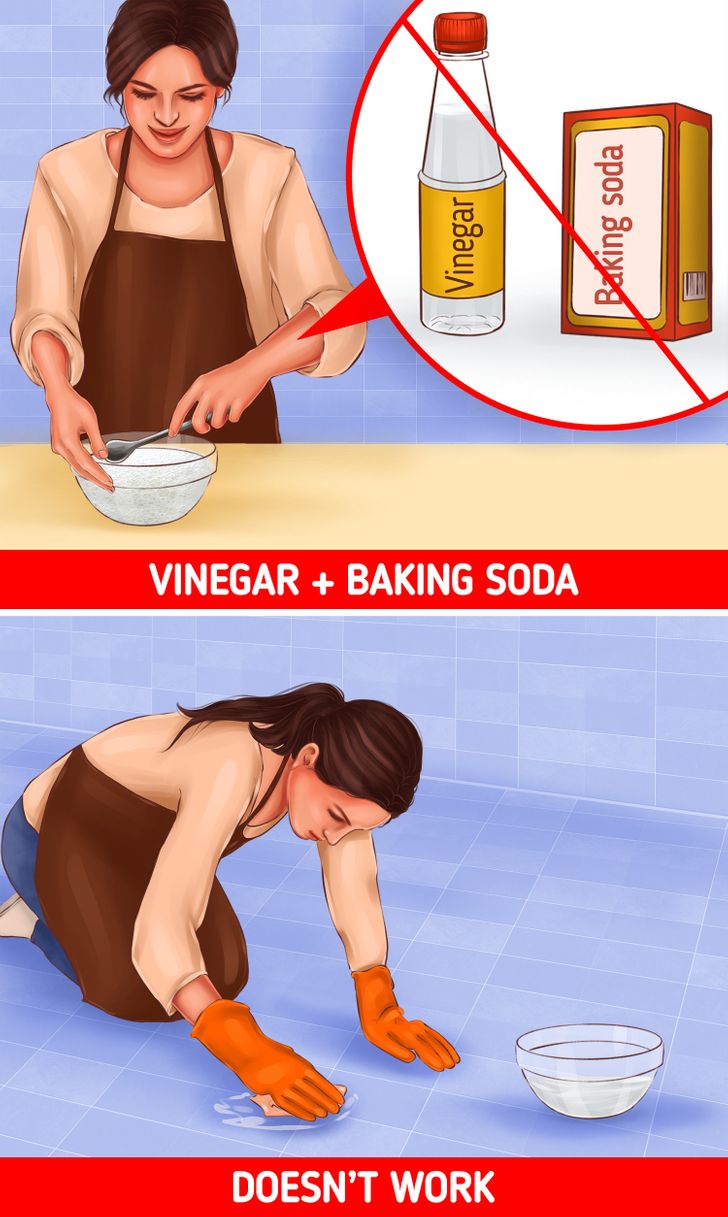
Baking soda is alkaline and vinegar is acidic. When you put them together they basically cancel each other out, and you will only end up with a mixture of what could better be understood as water and sodium. The bubbles you get when mixing these 2 ingredients are simply carbon dioxide, as a result of the reaction of the components mixing together. And technically, these 2 ingredients can be used to clean things as long as they are still bubbling, but that’s it.
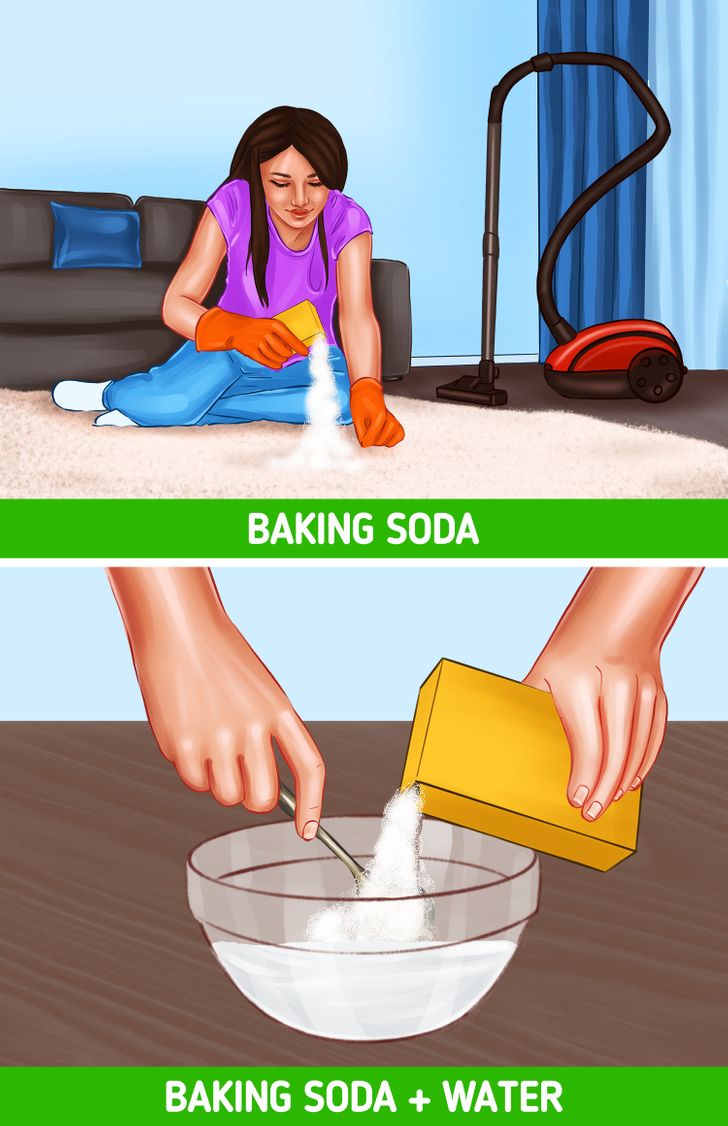
Instead of combining baking soda with vinegar, mix baking soda with water to remove grease and dirt that’s accumulated in the kitchen or anywhere else at home. You can also apply baking soda directly on the stains. You’d just have to sprinkle it on your carpet or mattress, for example, before vacuuming to remove unwanted scents. By not combining the baking soda with any type of acid or water it will still retain its original formula and work as an excellent mild abrasive cleaner.
2. Cleaning glass with newspaper
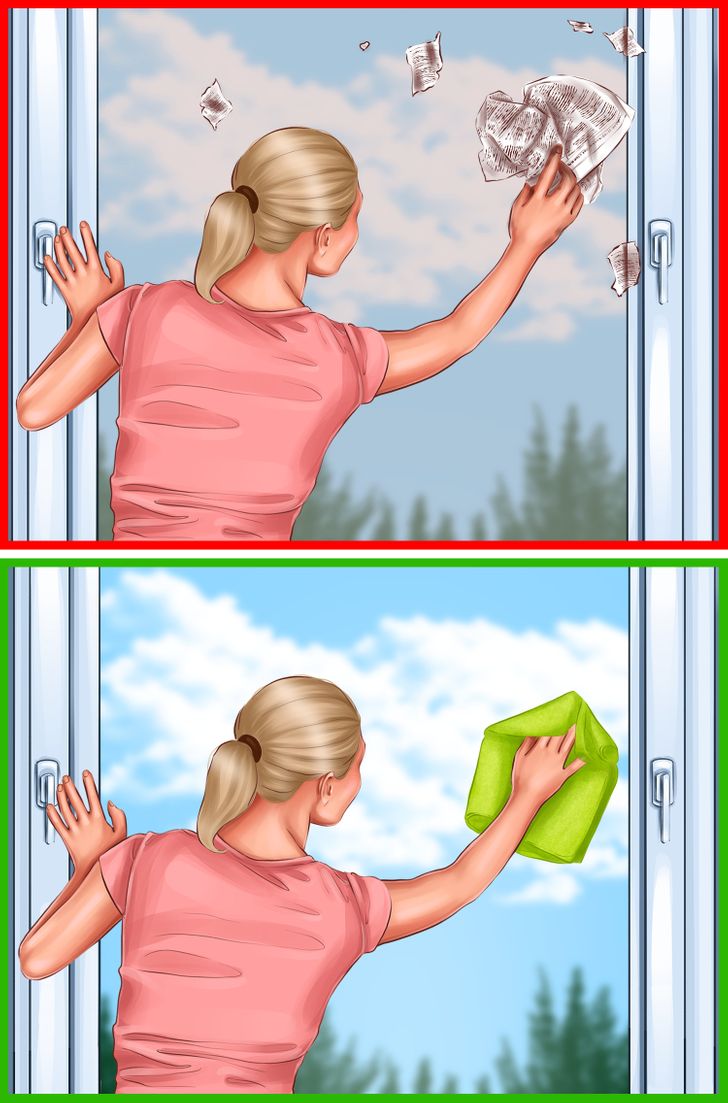
This is a fairly popular urban myth that actually turned out to be false. Newspaper was commonly used to clean and dry windows because of the type of petroleum-based ink it contains. This ink was known for slightly polishing the glass, so back in the day, this trick worked fine. However, this ingredient is no longer used in printing. And while paper can be used for window cleaning, sometimes the ink will actually stick to the frames or the paper will end up breaking or even being smeared on the glass. The best way to clean your glass, mirrors, and windows is to use microfiber cloths, which are reusable, absorbent, and washable.
3. Removing stains from clothes with hairspray
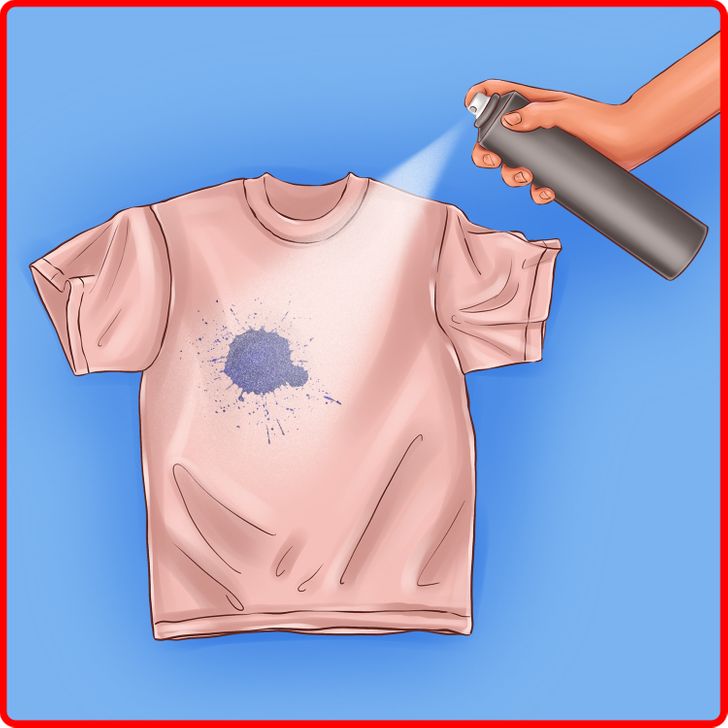
Over the years, this product gained a reputation for removing ink stains from different types of fabric and it was actually an effective method. But the secret ingredient for hair spray formula was alcohol. However, manufacturers have reduced the amount of alcohol or eliminated the ingredient from sprays altogether because it can dry or damage hair, so this trick doesn’t really work anymore.
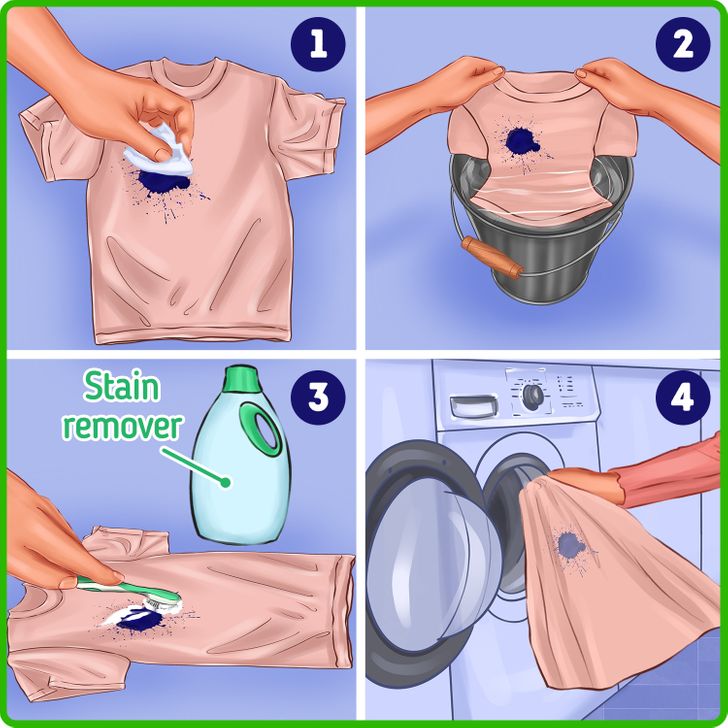
Hair spray can be substituted for detergent specifically designed to remove stains from clothing. If you ever need to remove this type of stain, you can start by removing the excess ink with a paper towel and then rinse the garment. Then apply the detergent and scrub the area with a brush. When the stain is gone, you just have to throw the garment in the washing machine and wash it using the regular cycle to get rid of the stain once and for all.
4. Soaking colored clothes in salted water
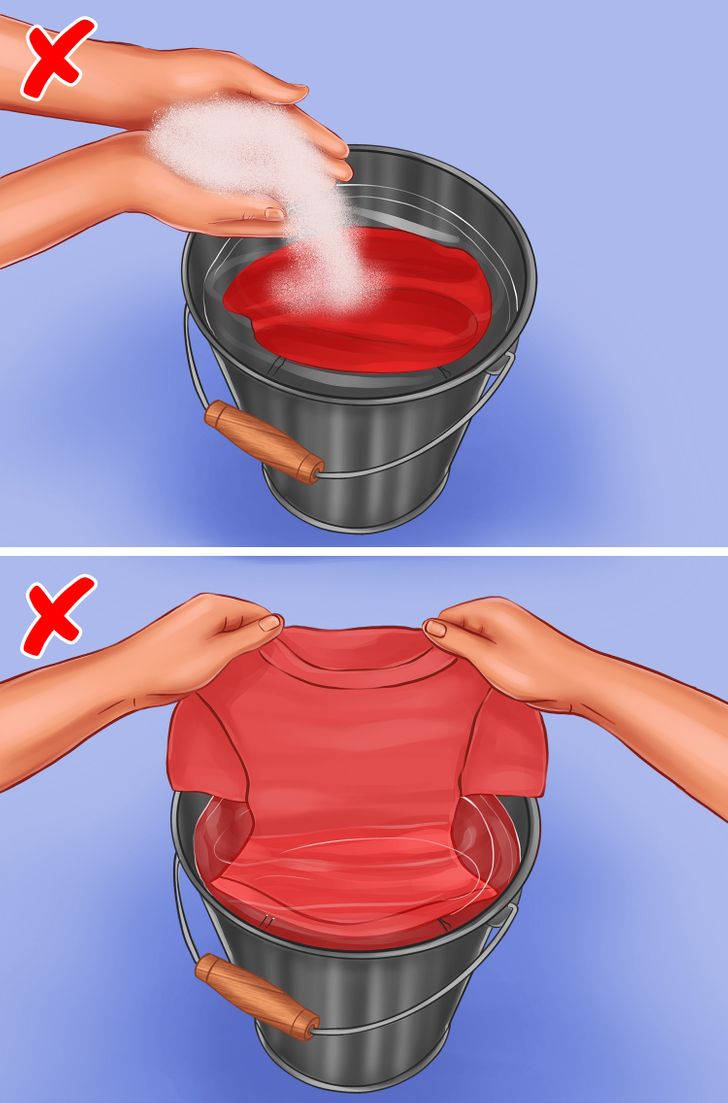
This another very common myth that people use to stop color bleeding from new clothes. However, you should know that this method is a waste of your time and money. Salt will not prevent color from coming off on fabrics that have already been commercially dyed. In the past, it was a common practice to add salt to the dye bath to help the fibers absorb the color, but now it is not effective due to the types of dyes being used.
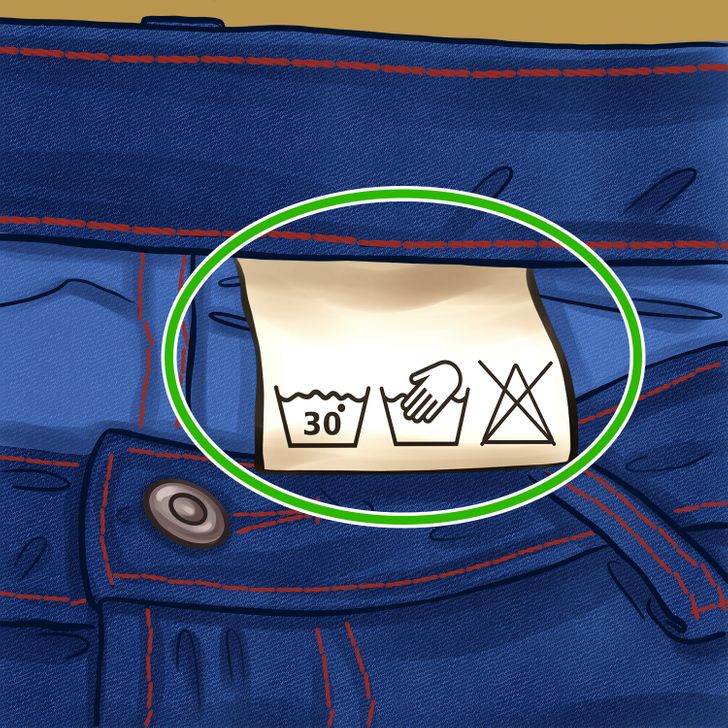
You can purchase a commercial dye fixative for home use if you want to fix this problem. However, you must know what type of dye is in the garment you want to treat. Other alternatives include washing the garment by hand and dividing all of your clothes by color to avoid dying other items. You can also avoid using chlorine products when washing them and using cold water to avoid color loss.
5. Using cola to clean the toilet
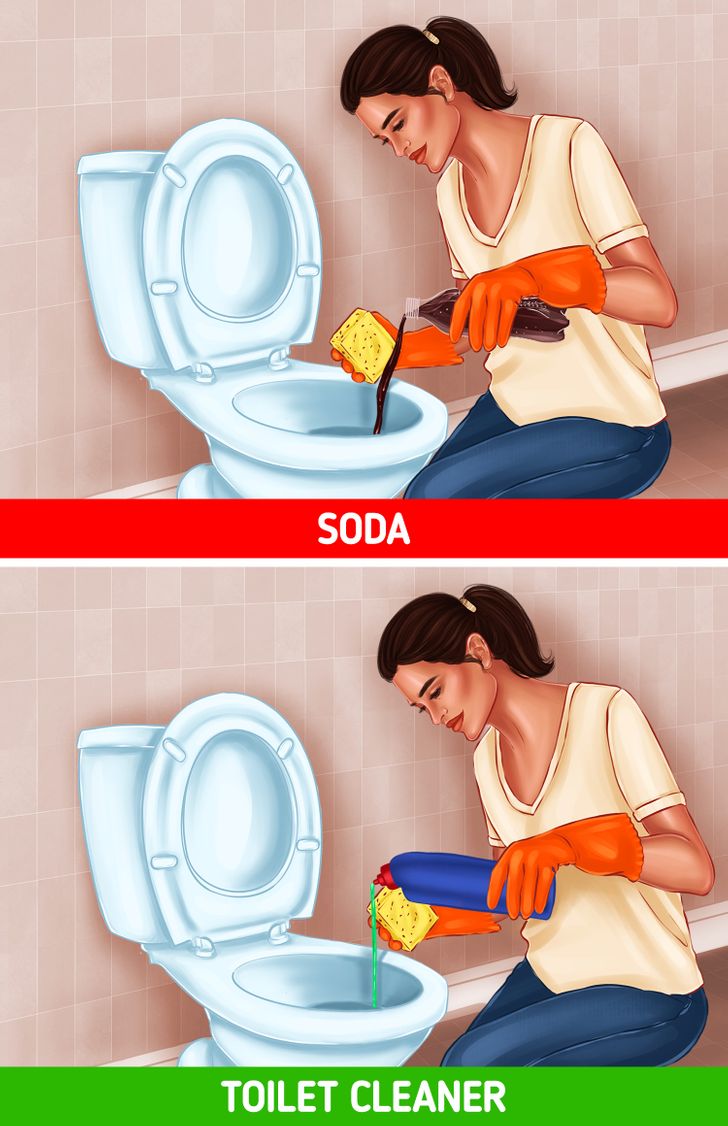
Another common myth about cleaning is that you can use cola to clean toilets. However, this trick is not very effective if you actually want to remove bacteria and dirt that’s harder to remove from the toilet. Coca-Cola was thought to remove mineral buildup because of the amount of carbonic acid it contains. However, this soda is basically a carbonated syrup that will leave any surface with a sticky texture. You’d be better off purchasing products specifically designed to disinfect bathrooms. These often contain ingredients like bleach or hydrogen peroxide.
6. Disinfecting the washing machine with mouthwash
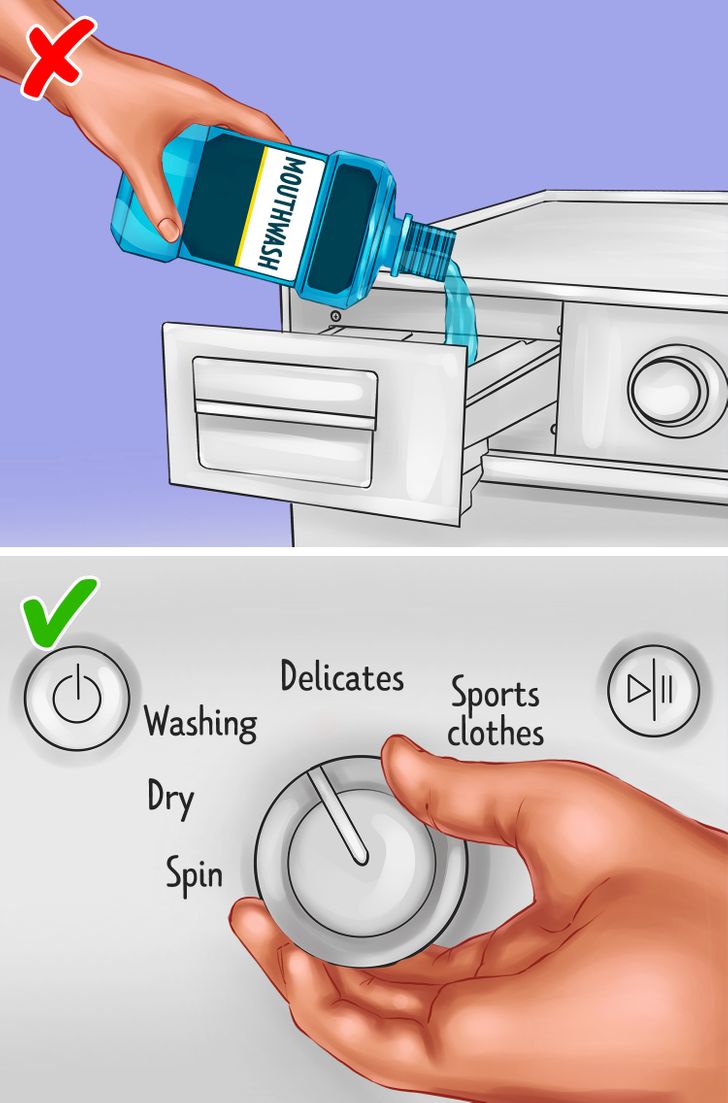
In theory, this remedy could work. That’s because mouthwash is designed to kill the germs living in your mouth so it makes sense to think that you could use it to clean the washing machine. But for this kind of appliance, you would need a much more concentrated solution and a way larger amount to get the right results. So instead of using mouthwash, you can run an empty cycle with hot water and some disinfectant. Then scrub the inside of the machine thoroughly. Then you can finish the cycle with another hot water cycle. You can also run a cleaning cycle if your washing machine offers this option.
7. Placing a lemon wedge in the dishwasher
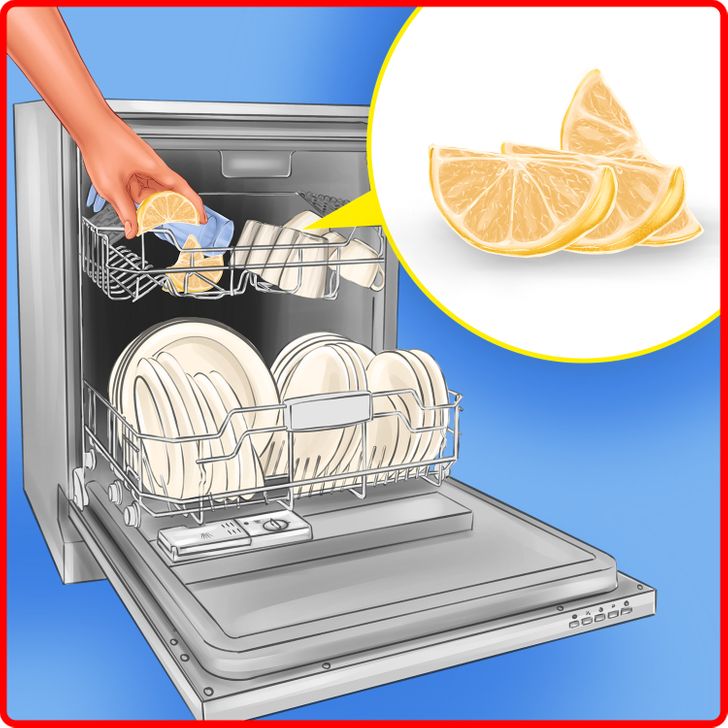
People using this trick claim that adding a few lemon wedges to the dishwasher can give a fresh scent to the load and leave the dishes sparkling. However, adding one or more lemon wedges to the dishwasher will not make a difference. Although many people claim that lemon is a natural disinfectant, when the machine is flooded with water, the acid contained in the lemons is not enough to actually have an effect.
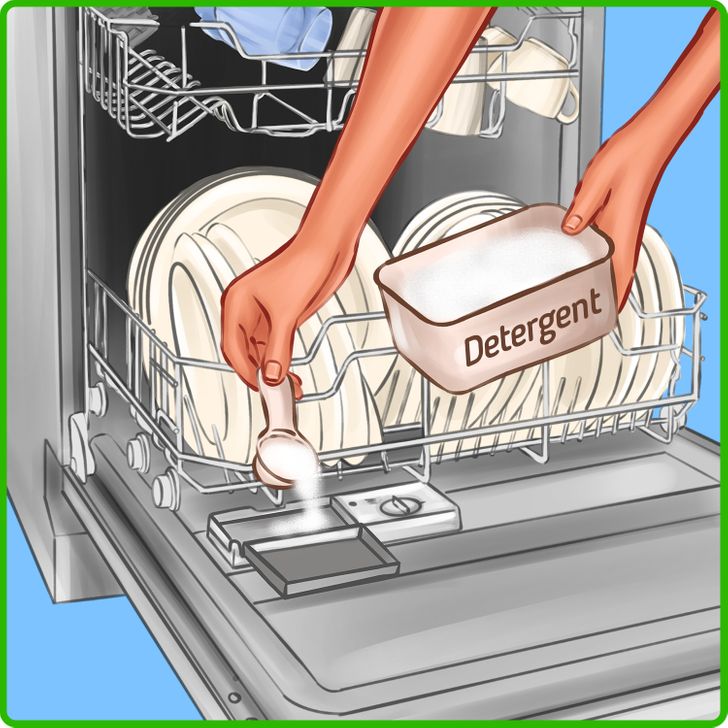
If you want to really get your dishes sparkling clean, you need to find a good detergent, whether it’s in powder, tablet, or gel form. Each of these forms of detergent has its advantages and disadvantages. For example, after several washes, the powder detergent may clump and you will need to clean the dishwasher. That’s just an example, but you need to evaluate which one’s more convenient. Depending on your preferences, you can choose the product that suits you best.
8. Removing iron stains with cornstarch
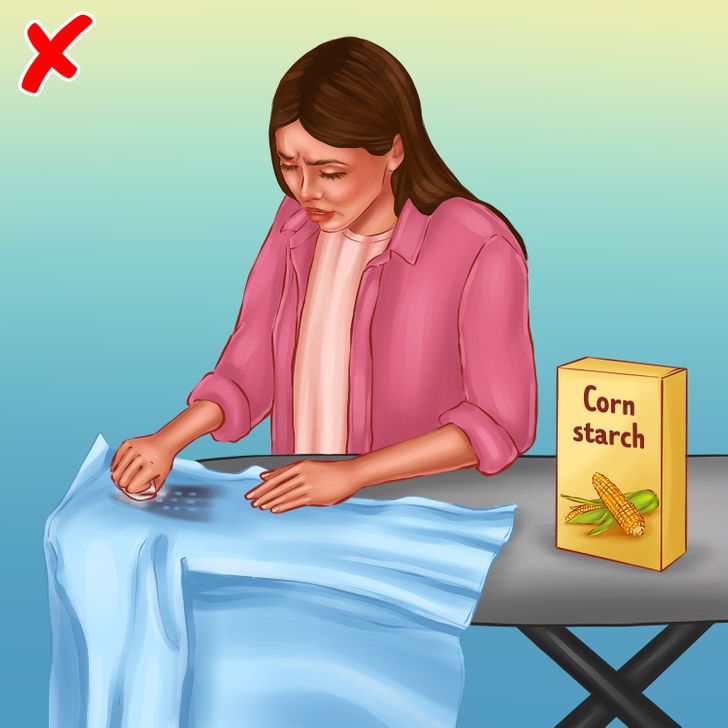
This one is definitely nothing but an urban myth. Iron marks are burnt fibers on garments. These tend to appear when the fabric is exposed to excessive heat for a prolonged period of time and in a single area. Of course, cornstarch will not be able to bring clothes back to life that have already been burned by your iron. It’s unsure where this myth comes from, but it’s definitely not true.
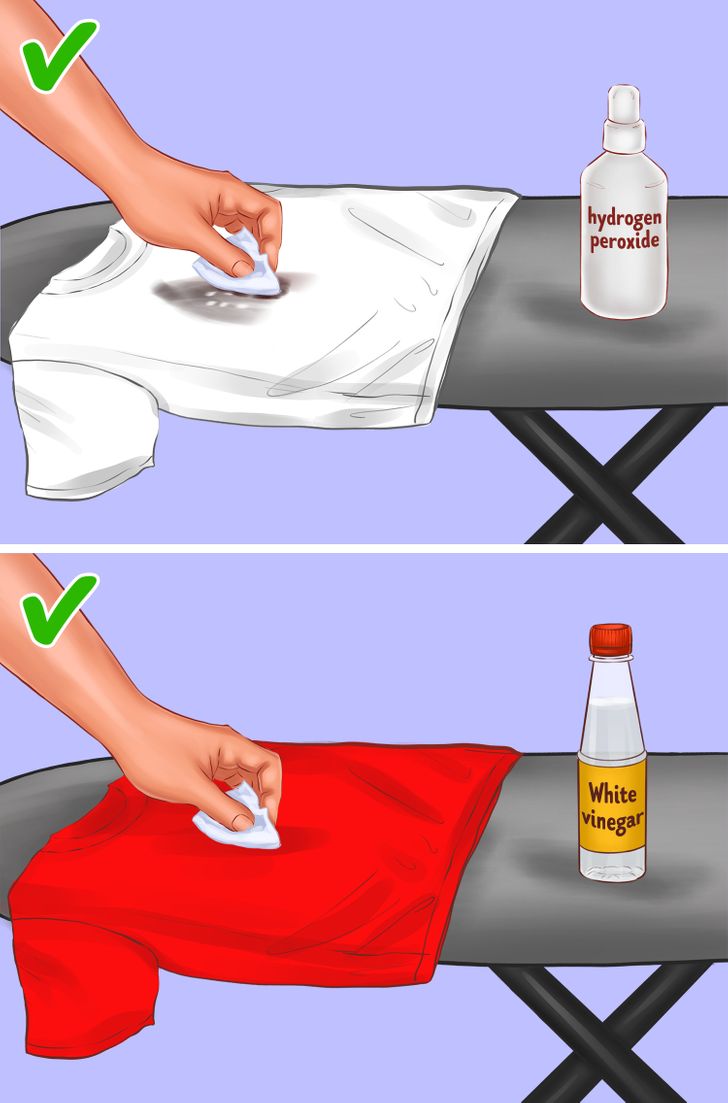
Light burns on clothing can be removed using several different methods. However, that depends on the type of fabric you’re trying to fix. For cotton clothing, you can just rub the mark with a bit of hydrogen peroxide and let it sit for one minute before rinsing the whole garment. Repeat as many times as needed. For colored clothes, instead of hydrogen peroxide, you can try using some white vinegar. Apply with a white cloth and repeat until the stain is gone. Once that’s done, just rinse with cold water and the mark should be gone.
9. Mopping all types of floors with hot water
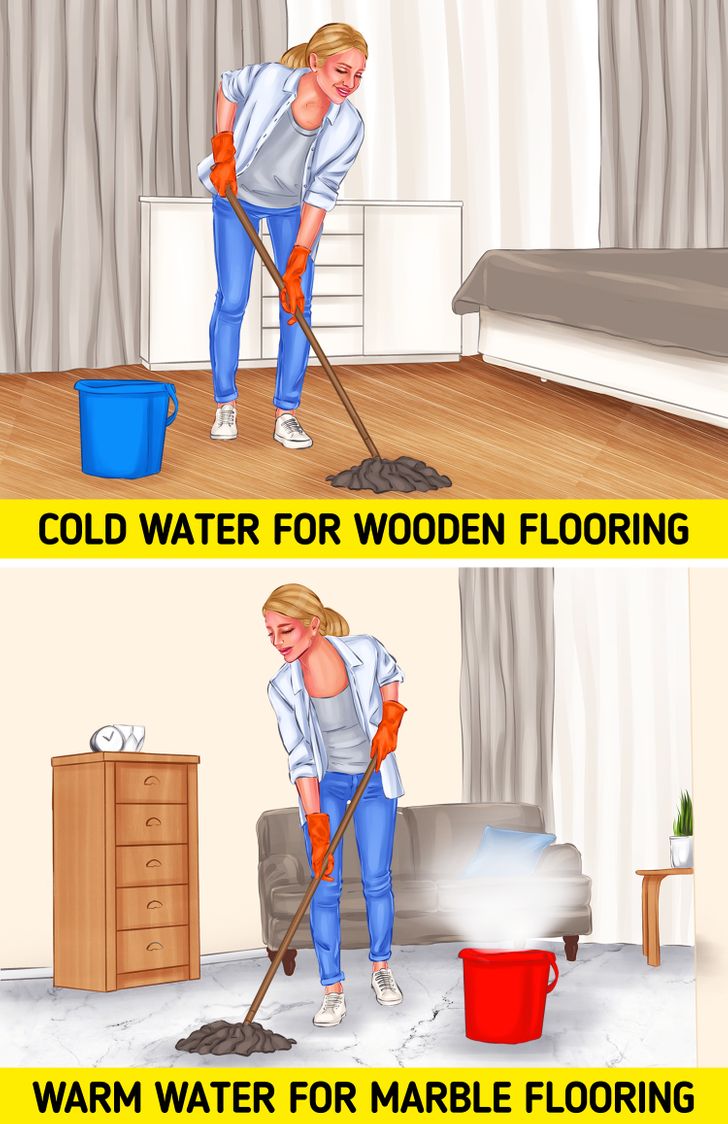
The temperature of the water you’ll be using normally depends on the type of floor you have. You don’t always have to use hot water, in fact, it’s actually best to mop with cold water because it is less likely to damage the floor. But you can mop floors that can tolerate high temperatures with hot water if you prefer. Marble, for instance, is a good candidate. Remember that cold water mixed with a suitable floor cleaner kills bacteria just as well as hot water, so you don’t really need to warm the water if you use the right product.
10. Adding too much detergent to the washing machine
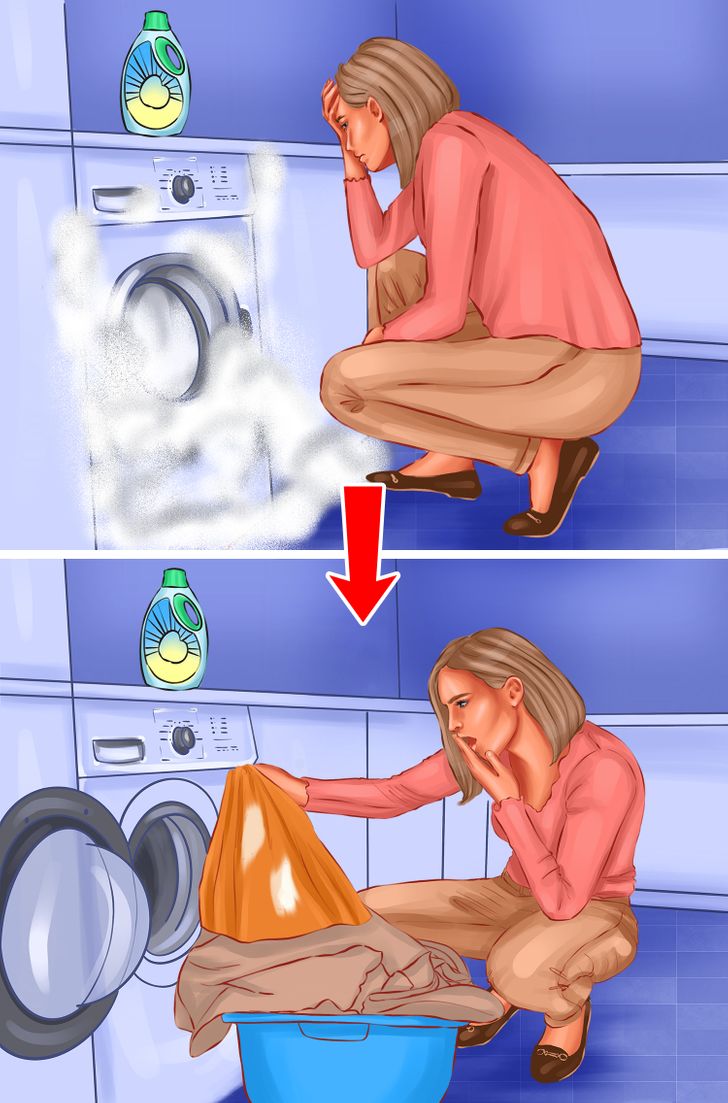
By pouring more product than needed to clean your clothes, you are not only wasting money, but you might even be hindering the proper washing of your clothes. In addition, you could be damaging the machine. In the end, the best thing to do is to follow the instructions provided by the manufacturer to get the best results.
11. Using ketchup to polish silverware
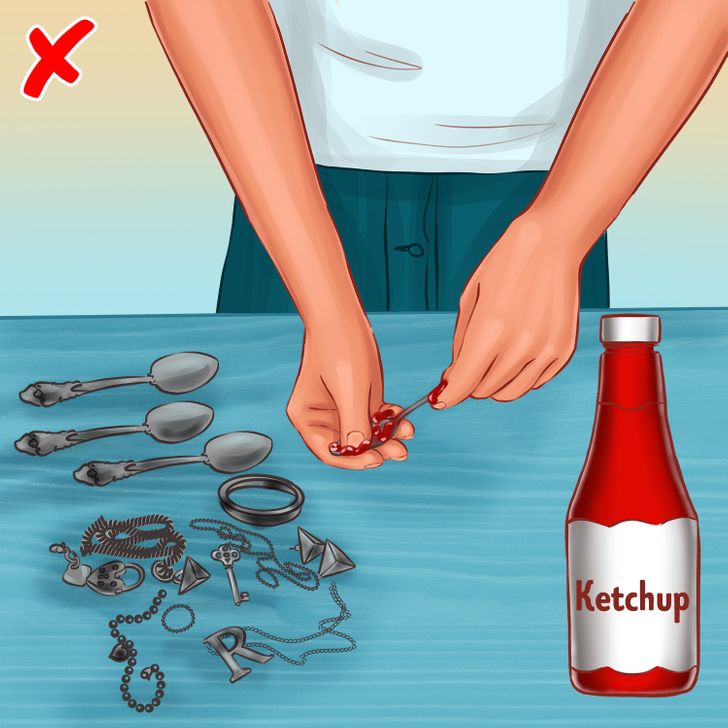
Some people rely on ketchup to clean silver because it contains acetic acid, better known by its common name: vinegar. But tomato actually has no effect on this material so you might not be using the best method at your disposal.
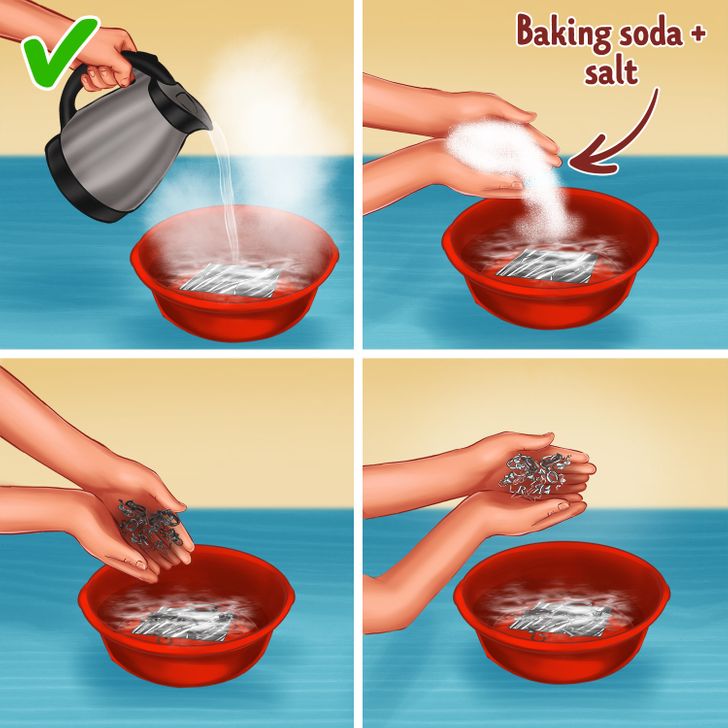
To clean your silver objects, you can place aluminum foil on a tray and add water, baking soda, and salt, and let your jewelry sit in this mixture for 2 or 3 minutes. This process actually works because by combining these 4 elements, a chemical reaction known as ion exchange takes place. This is a fairly well-known remedy that became popular because of how effective it is when it comes to restoring shine and removing the brown tarnish from the silver.
12. Applying car wax on the stove
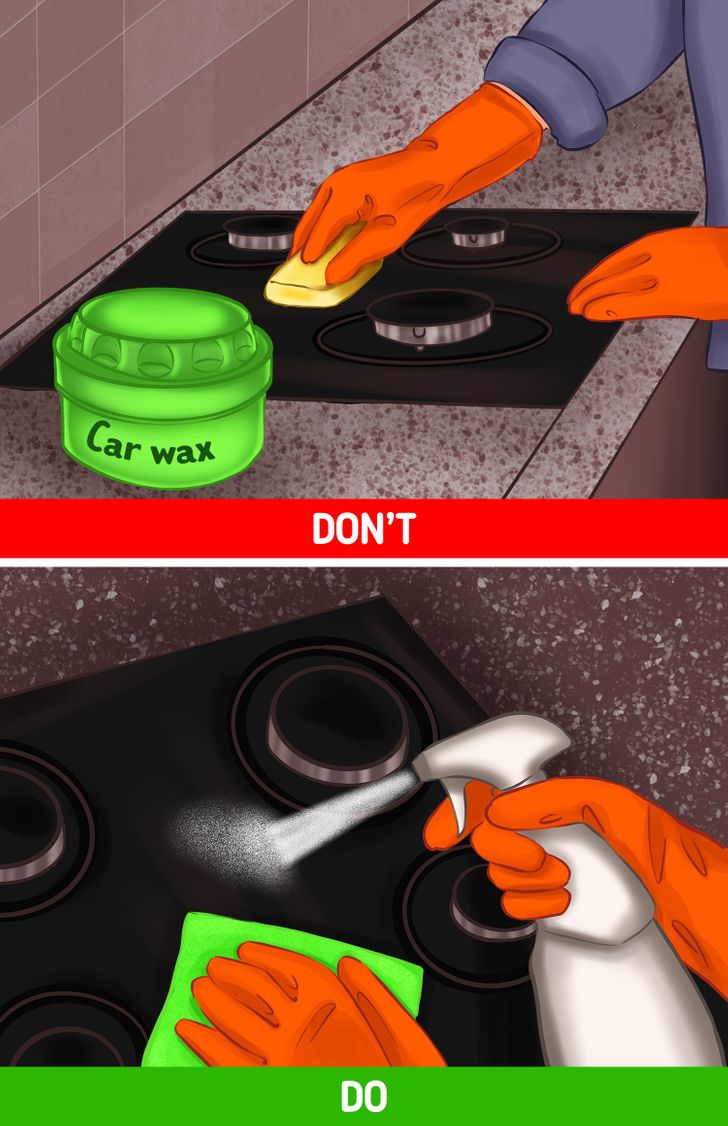
You probably already know just how difficult cleaning the stove or the grill can be. Many people claim that applying some car wax to the surface prevents food and dirt from sticking to it. But this product, instead of helping, actually poses a risk to your health and that of your family. Most car waxes could cause a fire due to their components. In this case, it is better to use a microfiber cloth with wax or a product that’s specially formulated to clean stoves. And, above all, you should clean it regularly so that dirt, food debris, and grease do not stick to it. That’s the safest, most effective, way to keep your kitchen clean.